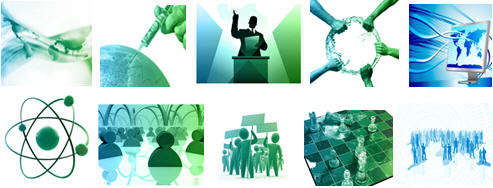November 2011: As the end of what has been a remarkable year approaches, we looked back in the October GT Briefing at some of the profound changes that took place in 2011, changes with long-term implications for our collective economic, social and geopolitical futures. Japan is rebuilding after the earthquake and tsunami in March, the Eurozone is wavering on bail-out plans, Libya has celebrated its liberation, Tunisia has just held its first free and democratic elections, floods are impacting many cities and livelihoods in Asia, and the “Occupy” movement against greed and poverty is growing globally. These events reflect trends whose impact will play out over many years to come, with the path and outcomes still far from clear.
So, as we said last year when we introduced “10 Key Trends to Watch in the Next Year” – trends are just that, trends. They don’t start and stop according to the calendar and they certainly don’t deliver neat “answers” or outcomes. Some evolve over long periods, others move faster than anyone can anticipate.
The critical challenge for each of us is to not just sit back and watch them evolve – action is needed now, even if the ultimate impact of the trends is not yet clear. If you don’t act, you can bet someone else will – and it can be easy to get left behind. So your role is to ask questions like “what if …”, “how could … impact us in the future,” “how could we anticipate and respond to …” – and then to translate resulting insights into options, choices and actions you and your organization could take to succeed in this uncertain and complicated world. We offer some suggestions on this in our article Bringing Global Trends Alive in Your Organization Today, Part 1.
Now let’s take a look at ten areas where we expect to see trends making a major impact in 2012!
- BRIC & beyond rising: Markets, competitors, mindsets and systems
- Financial and economic uncertainty explodes: New roles for power brokers?
- Geopolitical tensions: Politics as a barrier to economic and social stability, versus an enabler
- Food, water and energy security: Growing challenges
- Cybercontrols & cyberwars: The new frontlines of authority and crime
- Technology breakthroughs: Are we serious and will we pay the price?
- Beyond the Gang of 4: The fight for controlling the interface
- The democratization of everything: Facing the tensions of globalization and fragmentation
- Redefining playing fields: Fighting to own the new consumer
- Generations Y and Z moving to the forefront: Preparing for the digital natives
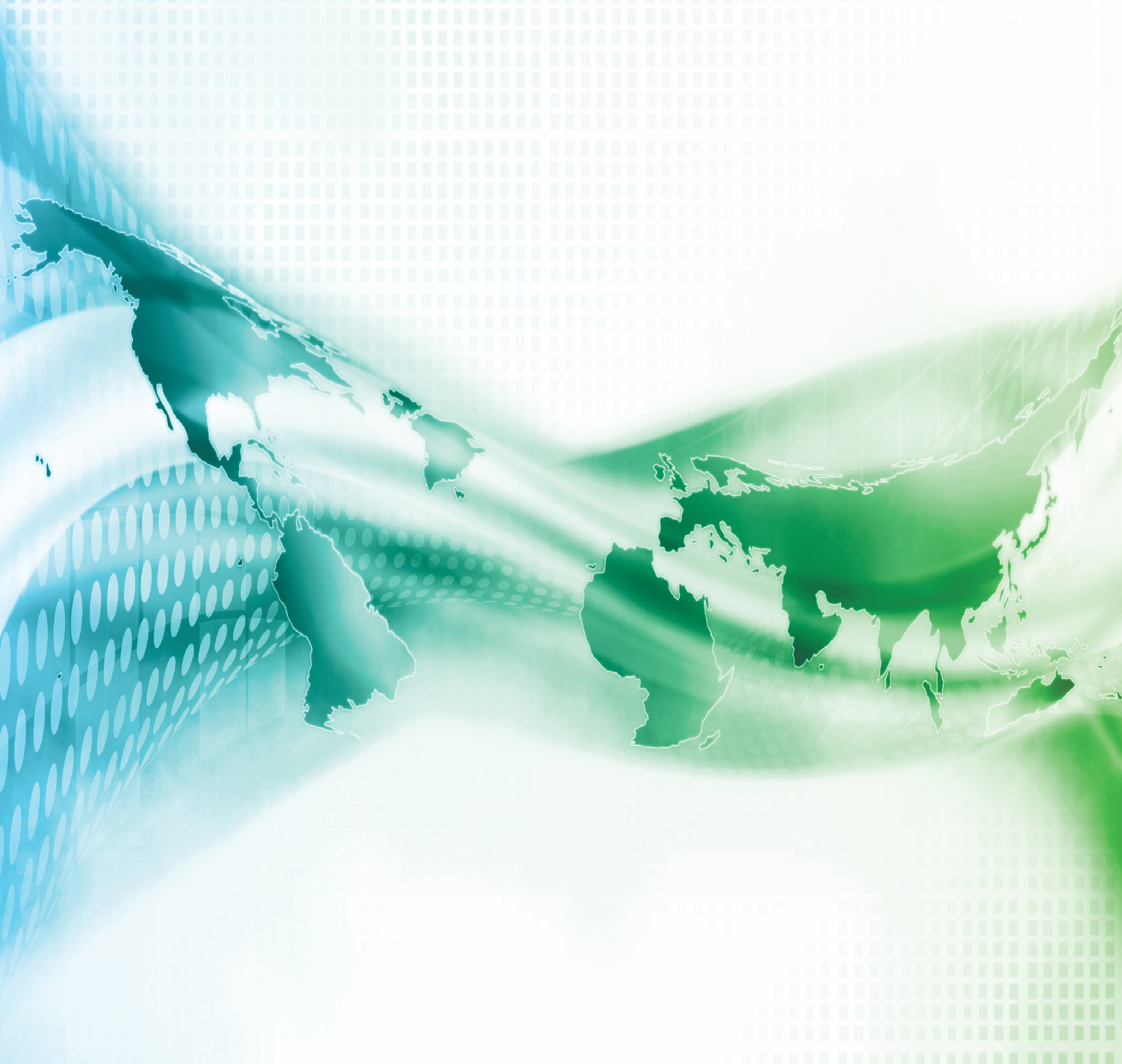
1. BRIC & beyond rising: Markets, competitors, mindsets and systems
The shift in economic power toward the BRIC and beyond markets continues. The high growth rates and increasing size of these economies continues to attract competitors from around the world. But these markets are playing an expanding role. Home market competitors from BRIC markets are extending their presence on the global stage, particularly into other high growth markets, leveraging strong bases and high growth in their domestic markets. The mindset of many of these players is focused on aggressive expansion and investment, in contrast to the consolidation and risk management mindsets of many traditional players. Beyond these players themselves, the economic and political systems across BRIC markets continue to challenge assumptions that there is a single model of capitalism. Elections are coming up in China and Russia in 2012 with no one expecting any basic changes to the political mindset, but economically Russia has rolled out a wave of privatization plans. Meanwhile China has been forced to raise salaries to try to keep potential social unrest in check, leading to a debate among manufacturing experts and economists as to whether rising labor costs and skill shortages could put an end to the era of cheap prices from China, resulting in global companies moving elsewhere in Asia for low-cost production—or even bringing it back home.
In Action!
The new global challengers: According to the Boston Consulting Group the 2011 global challengers (emerging economy multinationals) come from 16 countries, with China, India, Brazil, Mexico and Russia dominating the list, although less so than recent years. Africa, a continent with new-found ambitions, has placed 4 companies on the list. In the coming years these global challengers will potentially successfully take on established multinationals because of their innovative business models and understanding of emerging markets. Some of the new additions to the list include: Anshan Iron and Steel Group (China) with a revenue of US$15+ billion; Bharti Airtel (India) ranking as one of the largest telecom operators in the world; Bidvest Group (South Africa) which is the largest food-distribution company outside the U.S.; and Indorama Ventures (Thailand), one of the largest global producers of polyethylene terephthalate (PET).
Vietnam – A hybrid model: In twenty years Vietnam has gone from being one of the poorest places on earth to one of South-East Asia’s success stories. The transformation to a market economy began in 1987 but its political system remains a mix of Marxism and capitalism, one that has brought enormous economic progress. Its economy is weathering the global economic crisis well due to consumer spending, exports and a vast flow of foreign direct investment (US$10billion to US$11.5billion a year). Yet, demonstrations by farmers who have been thrown off their land, or workers angry about their meager wages, still happen. Complains about corruption, bureaucracy and the incompetence of petty potentates surface. But overall, Vietnam is under control and there is little real political opposition. Looking ahead, the question is: “How long will it manage to reconcile the communist system with a capitalist economy?” (Source: Guardian)
Look Out For…
BRIC bubbles: Economic bubbles come and go. The world saw the Japanese asset price bubble in the 1980s, the Dot-com bubble in 1995-1990 and the U.S. credit bubble of 2007, just to mention a few. What could be next? According to an article from Bloomberg the emerging growth “machines” of the BRIC could potentially be the focus of the next big bubbles as banks lose the confidence of investors as loans turn sour after a two-year credit binge. Brazil’s annual credit-growth rate has accelerated again, Chinese lenders have expanded credit at a record pace in 2009 and 2010, while in India the cost of insuring banks against default has climbed to the highest level in a year. China has US$3.2 trillion of foreign-exchange reserves, the world’s largest holdings with Brazil, India and Russia controlling a combined stash of about US$1 trillion but are these reserve cushions enough to cool down an eventual credit bubble?
India overtaking China? According to a new report from Ernst & Young, India is expected to record higher growth than China in 2013 and the two Asian powerhouses are expected to see a relatively lower impact among the 25 rapid growth markets identified in the report in the case of a deterioration of the Eurozone debt crisis. Although the Indian economy has cooled down during the financial crisis it is expected to take off again in 2013 with growth of 9.5%, slightly ahead of China at 9%. In 2014, India is expected to grow at 9% and China at 8.6%. Both Asian giants have a solid foundation for continued rapid economic growth, which will be driven by exports as well as services. In recent years India has made great progress in reforming the country but China’s economic policies, investment climate, and supply-side conditions seem to be more favorable than India’s. So who will be the biggest “giant” is yet to be seen.
Introducing MIST: The Goldman Sachs economist Jim O’Neill who came up with the now popular term “BRIC” about 10 years ago to describe the emerging economic powers of Brazil, Russia, India and China, has now coined the acronym MIST (Mexico, Indonesia, South Korea and Turkey) for the next tier of large emerging economies. These four countries are obviously not (yet) as strong as the BRIC countries. However, all four have: A large population and potential market, a substantial economic base at about 1% of global GDP each, and all are members of the G20. (Source: Institutional Investor) How attractive will these markets be for your company in future?
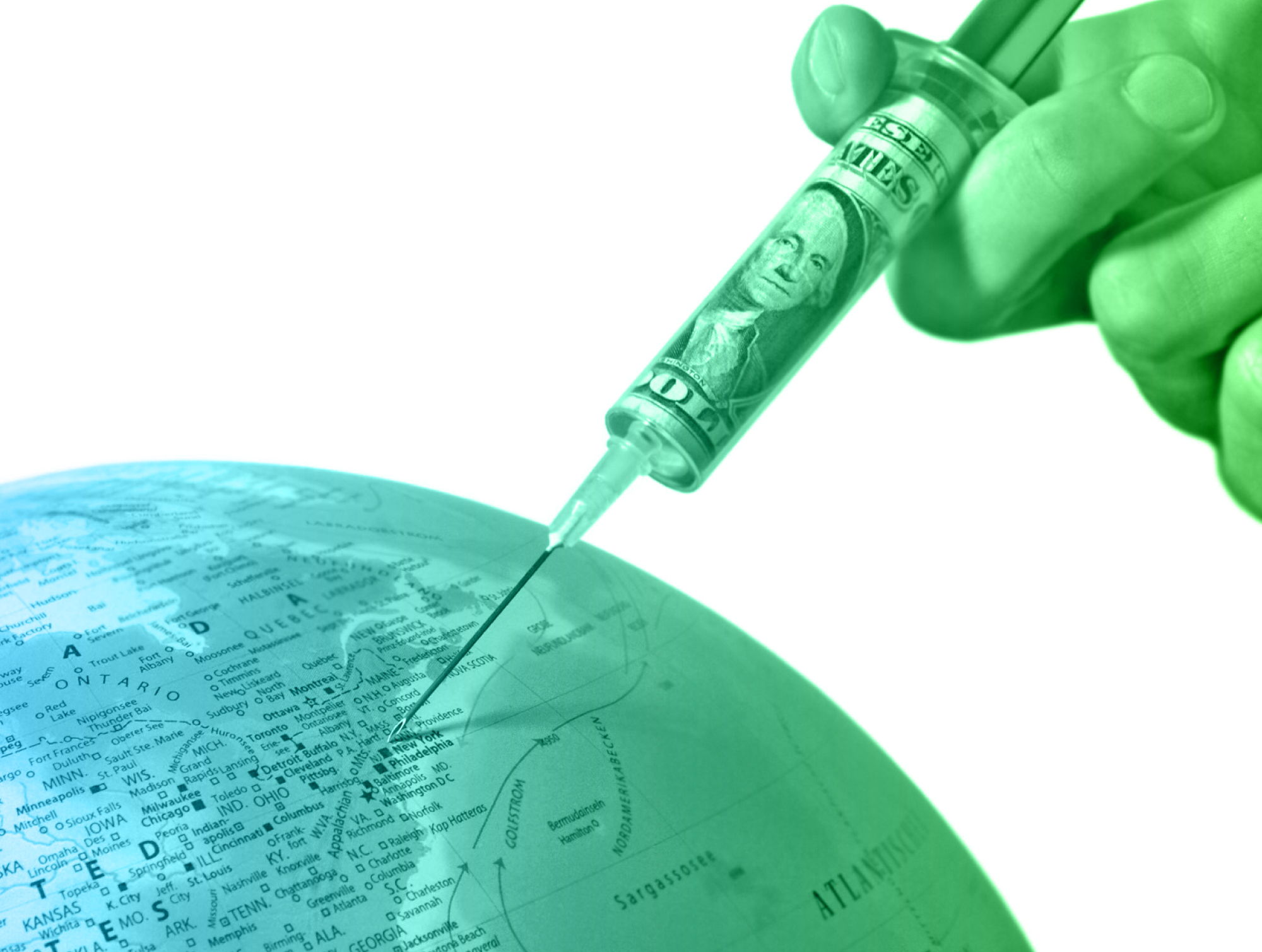
2. Financial and economic uncertainty explodes: New roles for power brokers?
Three years on from the start of the last financial crisis, hopes of economic stability and growth have been replaced with ongoing extreme volatility and uncertainty in the developed world. The sovereign debt crisis in Europe including the potential for a break-up of the Eurozone, political brinkmanship over the US debt ceiling, and the potential for “bubbles” in China and other rapidly developing economies (RDEs) means today’s financial world is one of increasing volatility. With significant global financial assets in the hands of RDE central banks and sovereign wealth funds, RDEs have the power to helping to address these challenges, adding a new role for these power brokers in helping to refinance the ailing nations of the West. If pursued this could represent a further significant shift in geopolitical and economic relationships.
In Action!
The Eurozone crisis: Turmoil continues over the debt deal for Greece, while the Eurozone continues to face destabilizing political in-fighting, highlighting significant differences in economic, social and security interests between the member countries. In these disunited states of Europe, the greater economic and political integration required to stabilize the Eurozone, is unlikely to be accepted easily and at worst could lead to the break-up of the Eurozone itself. The BBC boils the situation down to four big dilemmas: Borrowers versus lenders (some Eurozone countries are much more heavily indebted than others); austerity versus growth (austerity is killing growth); discipline versus solidarity (Southern European governments borrowed recklessly at cheap Eurozone interest rates and now, punished by markets, must learn discipline); and Europe versus nations (any solution must be agreed by 17 governments and ratified by 17 parliaments, an impossibly slow process). How these dilemmas are resolved – including the role of rapidly developing economy central banks in financing a potential bail-out fund, which looks unlikely given that the Europeans are not putting their own money in – or not, will decide the future of the Eurozone.
US debt crisis: Europe does not have a monopoly on political ineptitude and division, as the US amply demonstrated in its “game of chicken” over the US debt ceiling. With Obama’s “honeymoon” truly over, the US has succeeded in further paralyzing its ability to address the challenging economic conditions it faces, as well as damaging its global reputation. But it is not only about solving a debt ceiling crisis. The question is if whether the United States suffers from a deeper political malaise. Why is it that that the United States political leadership cannot resolve something that has never been anything more than a routine procedure, carried out innumerable times under both Democratic and Republican leadership?
Look Out For…
SWFs getting bolder: After dramatic growth since the 1990s, sovereign wealth funds (SWFs) around the world saw their assets significantly damaged by the financial crisis, falling from US$ 3.9 trillion in September 2008 to US$ 3.6 trillion in March 2009. With some 60% of SWFs dependent on petro-dollars, falling oil prices also hurt income streams. However, the latest numbers from SWF Institute shows that growth has picked up significantly since then: In September 2011 sovereign wealth fund market size was estimated at US$ 4.7 trillion. Looking forward, the influence of SWFs is expected to grow significantly – with a shift towards investment in developing economies and continued creation of sovereign wealth enterprises (SWEs) which have broader investment remits and the potential to take higher risks. How could these financial power brokers influence investment in your markets? (Source: SWF Institute)
The potential for a China “bubble”: As noted above the BRIC countries could potentially face credit crunches, particularly China which is now the second largest economy in the world after the US. According to Cheng Siwei, head of Beijing’s International Finance Forum and a former deputy speaker of the People’s Congress, China is now starting to experience its own version of the subprime debt crisis in the US due to tightening of domestic monetary policy that has created difficulties for local governments trying to repay debt. That debt has reached US$1.7 trillion and while some of the money has been used to finance much-needed investments in water systems and roads, a large part has fuelled unbridled construction with a dubious rate of return. (Source: The Telegraph). However, it is not only local governments and the Chinese banking sector which funded their debts that are facing a potential hard landing – property prices and building have been booming in China in recent years, helping to fuel economic growth. However, there is now oversupply – including “ghost cities” – and prices are starting to fall, prompting fears of a property collapse, particularly in high end real estate. The bubble has burst in the US and the Eurozone but what are the consequences if it also bursts in the world’s second biggest economy, China?

3. Geopolitical tensions: Politics as a barrier to economic and social stability, versus an enabler
Trust in national governments is low globally, as voters push back against parties tainted by scandals and undelivered election promises. People are turning to communities of choice to get their voices heard – or taking direct action. As politicians turn inward to try to secure their own shaky positions, extremist views are gaining ground in many countries. At the same time, accelerating global challenges from sovereign debt to Middle East peace to climate change are failing to secure non-partisan intergovernmental attention, investment, agreement and action. This focus on national and party interests, plus a lack of mechanisms to drive binding agreements is fuelling geopolitical tensions and has the potential for major long term implications for societies and economies.
In Action!
The Occupy movement: Protests against greed, austerity and poverty that started as in Spain in May 2011 as “the Indignants” and were translated into the Occupy Wall Street movement are now spreading globally. Across Europe, Canada and Asia, protesters are marching, listening to speeches, and displaying banners with anti-corporate slogans, including the now familiar, “We are the 99%,” “Banks are cancer” and “Tax the rich 1%”. The underlying issues: People are frustrated, thinking governments are not doing enough to solve fundamental problems including falling standards of living as austerity measures bite, high unemployment, and an out-of-touch corporate, financial and political elite (Source: CNN). Is it an attack on “The American dream” or its equivalent by a disenfranchised few who envy those that have worked hard to gain wealth – or have we really reached the level of too much inequality in society?
Growing nationalism and protectionism: European countries have a long history of conflict but are now united – or are they? Britain is one of the countries openly discussing how it can repatriate power from the EU to the UK, as well as fighting any further extension of powers to the EU, at least not without the consent of the British people. Will the EU in the near future see more demands for a transfer of power back to its member nations who are increasingly putting national interests first and showing unwillingness to make more sacrifices for a united European Union? The debt crisis is clearly highlighting a new era of growing protectionism and nationalism. What will be the possible implications for your business?
Look Out For…
Putin’s hopes for a “Eurasian Union”: Russian Prime Minister Vladimir Putin has big ambitions while Europe and the US are preoccupied with other pressing problems. The former, and most likely the next, President of Russia has called for a “Eurasian Union” of former Soviet nations (or some of them since others will not sign up, e.g. Latvia, Estonia, Lithuania and Georgia) saying that this bloc could become a major global player competing for influence with the US, the EU and Asia (Source: The Telegraph). Many Western governments may have read this news with alarm as it could lead to Moscow openly challenging the West’s dominance with a new superpower. The bottom line: It could offer many economic benefits but could also create significant geopolitical tensions both within such a union and worldwide.
The way ahead for Egypt, Tunisia and Libya: Free and democratic elections are only the start of the journey – whether for Tunisia, Libya or Egypt. How uprisings are translated into effective governance will depend in large part on whether Islamist and secular parties can together work out new rules, laws and constitutions that protect all citizens equally and allow for freedom of political and religious and beliefs. The road will be very different for each: Tunisia is likely to see the most peaceful transition as it is a secular country, with a broad acceptance of democracy (Source: PBS Newshour). However, Libya’s new constitution will need to be built from scratch. The transitional government has already announced that the new Libya will be structured according to sharia law, which does not suggest an easy route towards democracy. Against a background of renewed tensions over slow handover of power by the military and Christian-Muslim clashes earlier in the year, Egypt will hold its first democratic election this year. However, some fear that the Muslim Brotherhood and other Islamic fundamentalist parties will take power, shaking the relationship with Israel and fuelling geopolitical tensions in the region.
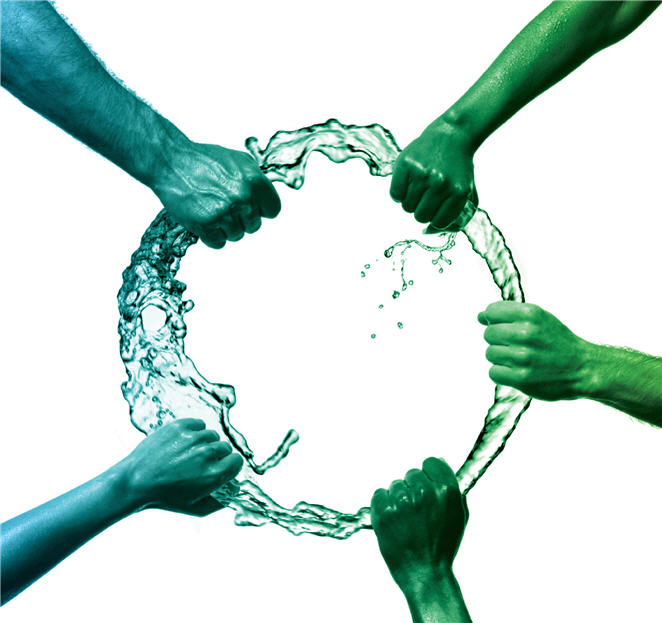
4. Food, water and energy security: Growing challenges
Latest estimates of population growth suggest we remain on course for over 9 billion people on the planet by 2050 and 10 billion by 2100. Coupled with the increasing affluence of a growing global middle class, increasing resource demands from rapidly developing economies, climate change and environmental challenges, these growth trajectories will continue to strain our ability to meet basic needs for food, water and electricity. At worst, we are seeing the start of resource crises that could lead to increased poverty, social unrest and potentially conflict. At best, the supply-demand imbalances we face are driving us to do more with less, focus on the legacy we hand to the next generations, and to innovate. Expect to see more headlines around these issues – and hope for concerted action within and between nations to address them.
In Action!
Famine in East Africa: Across Somalia, Ethiopia, Kenya and Djibouti 13.3 million people are affected by this devastating crisis, including over 4.1 million children. More than 2.2 million children are acutely malnourished, including over 500,000 severely malnourished. The famine has been worsened by two decades of conflict and insecurity resulting in hundreds of thousands of people, unable to cope, desperately moving in search of life-saving assistance (Source: UNICEF). The message from Karol Boudreaux, a poverty economist with USAID at the TEDGlobal 2011 conference in Edinburgh, Scotland is clear: “The food crisis is a policy crisis. Unless policies are changed the same thing is going to happen over and over again.” (Source: Allianz)
The global population hits 7 billion: It took until 1800 for the world’s population to reach 1 billion. Now it only takes 13 years to add another billion – even though fertility is declining, the world’s population is growing at a rate of about 80 million every year. So it is 7 billion now, projected to be 9.3 billion in 2050 and 10.1 billion in 2100 (Source: 7 billion actions). These extra billions will be born into a world of contradiction: A world with plenty of food and luxury, yet many of the newborn will be hungry and impoverished. This crowded world offers great opportunities but also present enormous challenges to overcome in terms of poverty, inequality, human rights and environmental changes (Source: UN).
Look Out For…
Innovation in water security: The Seawater Greenhouse project represents a truly original idea in innovative water security and has won a number of awards. It uses a technology that enables the growth of crops in arid regions, using a greenhouse structure, cardboard, seawater and solar energy. The greenhouse produces its own fresh water, uses no fossil fuels or pesticides, and has operating costs that are 10% to 25% less than those of a traditional greenhouse. The technology works best in arid regions by the sea, and near consumer markets so crops can be easily transported. Areas of Europe such as Crete, France, Greece, Italy, Portugal and Spain; California and Mexico in North America; large parts of China, India, Pakistan and Turkey in Asia; and much of Australia, the Middle East and northern Africa, are good candidates for seawater greenhouse projects. (Source: State of the planet)
The Russian-Chinese energy battle: With China the world’s largest energy consumer and Russia the world’s largest producer of oil and the second largest of natural gas, together sharing a 4000 km border, these two countries are destined to have some kind of energy relationship – and they have. However, the giants’ relationship is plagued with problems and according to SIPRI the Chinese-Russian energy (and security) relationship is crumbling. In recent years China has strategically diversified its suppliers of oil, with the largest now Saudi Arabia, followed by Angola, Iran and Oman and then Russia. China has also had success in finding other partners to deliver natural gas, especially in Central Asia. Russia has not, as it hoped, become a major player in providing energy to China. What are the long-term implications of this crumbling energy relationship for security in the region and worldwide?
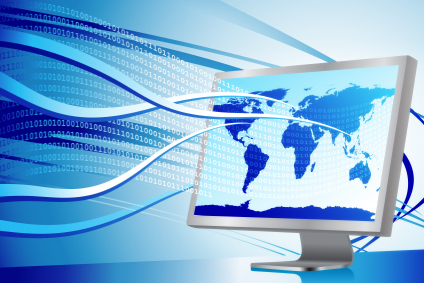
5. Cybercontrols & cyberwars: The new frontlines of authority and crime
In a world awash with information, cyberspace is the new frontline for authority and crime. Knowledge and information is becoming a source of competitive advantage, for both organizations and nations. But it’s a growing challenge for either to retain control as mobility of everything (information, people, products, beliefs) and democratization of everything (commerce, politics, societies) increases rapidly and globally. In this world authority will increasingly be conferred by popular opinion versus mandated by traditional institutions. In the meantime, we will see ongoing struggles to retain authority including censorship and cyberattacks against offending entities. Which is where we move into the realm of crime: With “private sector” cybercrime and cyberattacks also growing rapidly.
In Action!
Global connectivity – also for the cybercriminal: Already one third of the world’s population has access to the internet, and with this comes growing cybercrime. A recent study from Ponemon Institute has found that the median cost related to cybercrime for 50 US companies was US$5.9 million per year. This represents an increase in median cost of 56% from the first cyber cost study published in 2010. It took an average of 14 days and US$247,744 to clean up an attack in 2010. In 2011, with a jump in stealthy tactics, that average increased to 18 days, and the cost climbed to US$417,748. More than 90% of all cybercrime costs were caused by malicious code, denial of service, stolen devices and web-based attacks. (Source: ArcSight). Does your company having enough IT security?
Internet censorship: So who controls the Internet? It seems that authorities in many countries block the service as it suits them. This year has been the big “shut down the internet year” to prevent civil unrest spreading, with shut downs happening repeatedly in the Middle East and North Africa. But people around the world see access to the Internet as their fundamental right. They think the web is a force for good, and most don’t want governments to regulate it (Source: BBC). China in particular has reinforced its “Electronic Great Wall” while Uzbekistan, Syria, Vietnam – to name but a few – have enhanced their censorship to stifle any echoes of the revolutions in the Arab world. Globally, one out of every three Internet users is unable to access a free Internet, as internet censorship becomes the norm. Around 60 countries, also in the Western Hemisphere, are implementing some form of Internet censorship, which entails either content filtering or netizen harassment. However, their netizens keep on learning new ways to circumvent censorship. (Reporters without Border for Press Freedom)
Look Out For…
The smartphone threat: Cybercrime is not only targeted at companies, governments and other public institutions. 69% of online adults have been a victim of cybercrime in their lifetime. Of these, 10% have experienced cybercrime on their mobile phone and 42% more mobile vulnerabilities were reported in 2010 compared to 2009 – a sign that cybercriminals are starting to focus their efforts on the mobile space. In addition to threats on mobile devices, increased social networking and a lack of protection are likely to be some of the main culprits behind the growing number of cybercrime victims (Source: Symantec). According to SANS Technology Institute the biggest 2011-2012 security issue seems to be apps with spyware. Even the apps that come loaded on your phone are potentially a problem. The security issue is that your smartphone knows where you are, has access to your email, appointments, phone contacts, and is part of the way you surf the web, make purchases, access your bank account – yet has very little security or privacy built into it. Do you know the level of your smartphone security?
Privacy backlash: Once data goes up on a network, the genie is out of the bottle and cannot be put back in. It is virtually impossible to remove posts, photos, and videos one they have been posted – the bottom line, think BEFORE you post because it will follow you for the rest of your life. Many years ago, Scott McNealy, at that time CEO of Sun, made an infamous statement: “You have zero privacy anyway. Get over it.” It seems like people did just that, continuously sharing and oversharing. But is a lawsuit against Facebook over privacy concerns just the beginning? Have people finally reached the point where they no longer want private information to be tracked and exploited? Will consumers demand more protection and software encryption? What does this mean for businesses focusing on internet marketing?

6. Technology breakthroughs: Are we serious and will we pay the price?
Technology can make a massive difference on global issues and both companies and countries are competing for leadership in future technologies. This is good news, driving more and faster technology advances. The bad news is that we are not always applying these advances, particularly in Western economies where long-term investments are being side-lined by short-term pressures. For example, many clean technologies are available or in development, but we are not ready to embrace them fully. A 2011 IPCC report suggests that close to 80% of the world‘s energy supply could be met by renewable sources by 2050 if backed by public policies – without these, the lower-case is 15%. Think also about advances on health or water that need long-term investments. Are we really serious about our future?
In Action!
Renewable energy: Global investment in renewable power and fuels set a new record in 2010 at US$211 billion, up from US$160 billion in 2009 and US$159 billion in 2008. Within the overall figure, financial new investment, which consists of money invested in renewable energy companies and utility-scale generation and biofuel projects, rose to US$143 billion, from US$122 billion in 2009. A sharper increase, however, has been evident in the other components of the total investment figure, namely small-scale distributed capacity, and government and corporate R&D. These investments jumped to US$68 billion in 2010, from US$37 billion in 2009 and US$26 billion in 2008, reflecting mainly the boom in rooftop PV, but also a rise in government-funded R&D, as spending increased from ‘green stimulus’ measures announced after the financial crisis. (Source: UNEP) The question is whether investment will continue as the developed world faces increasing pressure for austerity – already we are seeing clean tech falling down the list of priorities.
Failure to Invest: The US economy is already facing many bumps in the road in terms of economic growth, budget constraints, high unemployment and political stalemates. But some of these challenges could be addressed by ironing out the actual bumps in the road and tackling the challenge of America’s failing infrastructure which is costing the economy billions in terms of lost output, jobs, household income and exports. In 2010, a report by the American Society of Civil Engineers suggests that deficiencies in America’s roads, bridges, and transit systems cost American households and businesses roughly US$130 billion, including the costs of operating vehicles, travel delays, safety and environmental impact. They contend that US$94 billion per annum to 2020 is required to rectify these deficiencies. This is clearly a wake-up call to the US government — and one which could well be echoed in other countries around the world that face the challenges of ageing infrastructure. (Source: ASCE)
Look Out For…
Stop wasting, start using: The total of global food loss and waste amounts to about 1.3 billion tonnes per year. Every year, consumers in rich countries waste almost as much food (222 million tonnes) as the entire net food production of sub-Saharan Africa (230 million tonnes) (Source: FAO). Packaging, already being developed by researchers at the University of Strathclyde in Glasgow, alerts consumers about food starting to go bad, helping us not to throw out food fresh enough to eat. This new indicator, made of ‘intelligent plastics’, gives a warning by changing color when food is about to lose its freshness (Source: ScienceDaily). RFID, another already existing technology, is capable of revealing our shopping habits down to the last detail and could help to reduce the excess volume of goods in shops. It lets us know exactly what is being produced, sold and even eaten. It can help tailor production, packaging, distribution and warehousing so that less is wasted in the supply chain. (Source: ScienceDaily) But will we use it?
Energy poverty – can we solve it? The U.N. has declared 2012 the International Year of Sustainable Energy for All. 1.3 billion people around the planet lack access to the grid but according to IEA, it would be possible to achieve universal energy access for the world by 2030 with around US$48 billion a year in global investment. While many people lack access, others are overusing. The London-based company Moixa Technology estimates that more than 1 trillion kwh of global energy is currently wasted every year due to inefficient inverters and AC/DC adaptors, used in computing, electronics and now LED lighting. The company has just revealed their new ’Smart DC’ device – a home energy control center that could decrease users’ overall electricity costs by up to 30%. (Source: PowerPulse)

7. Beyond the Gang of 4: The fight for controlling the interface
With the data deluge increasing, organizations are competing to gain – and keep – the attention of their consumers and customers. It can’t be done alone. The growing array of intermediaries through which their information is filtered, aggregated and relayed to target audiences, includes search engines, social networks, mobile telcos and retail portals – the question is who controls these interfaces, and thus the potential for value creation and capture. Turf wars are erupting between tech leaders dubbed the “gang of four” (Amazon, Apple, Facebook and Google) to control the interfaces – but technology advances and social dynamics are shifting power in the landscape of intermediation. Keep a close watch on what is coming next – beyond the gang of four – as it will impact your ability to compete.
In Action!
Facebook versus Google+: Just four months ago Google launched Google+, a competitor to social networking giant Facebook. As of today it has more than 43 million members, the majority of them men (Source: Facebook). Facebook has a seven-year head start in the social media space and has grown to 800 million members. The same week as Google+ was launched, Facebook announced big changes to its site including profiles turned into timelines and a new breed of social apps, leaving some users wondering if they should forge ahead with Facebook or switch to Google+. Social media plays a huge role in everyday business and private life. What we see now is practically an all-out war for social media dominance between two giants: Facebook and Google. While Facebook has the members, Google+ has the enormous power of search engine Google covering its back.
Amazon versus Apple: The fight for the entertainment market, the tablet war or the battle of the ebooks – take your choice. Amazon has with its US$199 Kindle Fire declared war on Apple and its iPad. Before the Amazon Kindle Fire introduction there was no real tablet market – there was an iPad market, with some hangers-on. The rivalry between the companies has been emerging for some time with both Amazon and Apple aiming to host entertainment content in the cloud. Both have huge, loyal customer bases to start from. And now, both are selling tablet computers that their customers can use to buy and access millions of songs, videos, apps, games and magazines (Source: CNN Money). CNN suggests that this rivalry may work for now, with Amazon focusing on the low-priced end of the market, while Apple positions the iPad at the top – both will gain from enticing users to join the cloud community. However as tablet technology matures, commoditization may eventually shrink Apple’s high-end market. Who wins the battle is yet to be determined, but any company that gets in the way of these two giants will be brave – or foolish.
Look Out For…
Beyond the PC: There is a growing sense that we are starting to see the end of eras, whether of the PC or the internet as primarily a search and information tool. Wireless mobile handset sales have already far surpassed PC sales around the world. Computing is shifting from being stationary to mobile, from arms-length to intimate, from formal to casual, but it doesn’t mean the PC is dead. Forrester forecasts that even in the US, a mature market, consumer laptop sales will grow 8% per annum between 2010 and 2015, and desktop sales will decline only slightly. But still there is a potential impact of: The post-PC world; games making inroads as tools in multiple arenas; human behaviors changing; a potential shift from apps towards HTML5; and the rise of the mobile enterprise. Again the winners remain to be seen – the Gang of Four or others – but they will wield significant power in future. These are turf wars for everyone to watch.
The big data challenge: Managing the data deluge is a huge challenge for every organization. In 15 of the US economy’s 17 sectors, companies with more than 1,000 employees store, on average, over 235 terabytes of data – more data than is contained in the US Library of Congress (Source: McKinsey Quarterly). Companies are creating huge amounts of information as they try to connect more closely with customers, suppliers and all forms of stakeholder, believing it can guide them to make better and more efficient decisions than their competitor. But what exactly should we do with all of this data, particularly if we don’t have room to store it all? How do we figure out what is useful and what is not? How do we avoid our people getting swamped by it? And, of course, who will manage it for us?
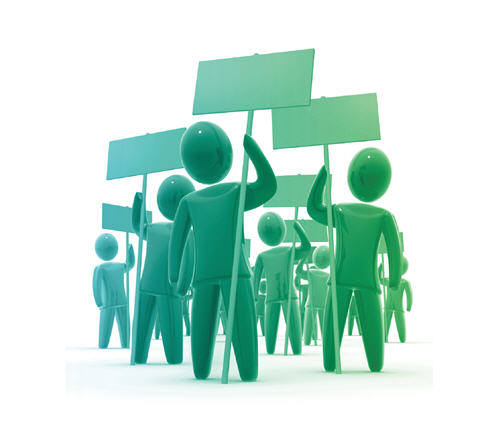
8. The democratization of everything: Facing the tensions of globalization and fragmentation
People have choices, and they are making them, often with friends or communities. The impact is being felt from politics to purchases to the ways we seek knowledge. Everything can be influenced by an individual or collection of individuals with an objective. As these forces of democratization collide with those of globalization and fragmentation, differences in ideas, cultures, beliefs and systems are being exposed – and in some cases exacerbated. Tribalism, nationalism and cultural conflict have been rising, opposing the forces of globalization and integration. As the democratization of everything gains ground the question is whether it will be a positive force in bringing people together to bridge these divides (integration) or contribute to rising differences and tensions (fragmentation).
In Action!
Information sources: Today Wikipedia rivals the well-respected Encyclopedia Britannica. Despite ongoing debates as to whether or not it can be used on equal terms when it come to research and education, numerous studies suggest that Wikipedia is a good place to start for many subjects. According to US News many professors in the US encourage their pupils to use the site as a catalyst for their research, but do not permit students to cite Wikipedia as a source. Some professors at schools such as Georgetown University and Virginia Tech have asked students to write their own wikis in lieu of traditional research papers but despite that it hasn’t attained status as a trusted source of information in academia – and it likely won’t soon. However, this experiment in democratizing information is helping to shift our standards for where and how to get reliable knowledge, especially as the ne(x)t generation embraces the digital world. The biggest future challenges for Wikipedia: Recruiting the next generation of contributors and keeping up with the increasing focus on real-time information, for example via Twitter.
Social media as a decision making channel: Accordingly to the McKinsey Quarterly word of mouth is the primary factor behind 20% to 50% of all purchasing decisions. In 2010 Forrester introduced a Peer Influence Analysis tool building on the idea that there are two distinct groups of influential consumers online. It found that in the US, only 13.8% of online consumers create 80% of influence posts (use blogs, forums, and review sites to share complete opinions about brands and products online), and just 6.2% of online consumers create 80% of all influence impressions (use sites like Facebook and Twitter to connect their friends to influential content from companies and consumers). Across Western Europe 11.1% of online users create 80% of all influence posts – and only 4% of online users are responsible for 80% of all influence impressions. Forrester also found that some 500 billion influence impressions about products and services were created in social media each year – a number that they are confident will grow when repeating the research in 2011 (results not yet available).
Look Out For…
The democratization of industries: With easier access to information people are no longer just satisfied with the knowledge they get from professionals and experts. Patients are changing from being passive receivers of treatment to actively taking matters in to own hands. More and more medical sites are popping up linking patients to the best treatments and to other patients. Patients Like Me has almost 118,000 users who post their experiences with medications for more than 500 conditions and is by far the biggest data-driven social networking site of its kind. Others include Cancer Commons, a site that aims to help cancer patients focus on the most promising treatments by tapping the collective wisdom of the medical crowds. Medify brings users with various long-term illnesses a raft of information about the research and treatments that have worked best for others like them. Beyond healthcare, think about online tax and accounting programs or legal self-help sites – do we really need the professionals for routine tasks? Which industries are likely to be the next?
Open innovation growing: In an era of information abundance and rapid communications, organizations and individuals are increasingly turning to open source and collaborative networks to find, create and leverage knowledge and expertise, faster and at lower cost than in old “closed loop” models controlled within a company. Crowdsourcing is one manifestation of our increasing ability to tap into the global brain – and one that changes the power balance between individuals, communities and organizations. According to Forbes crowdsourcing will become top of mind for most companies as 2011 turns into 2012. Many big companies are already using crowd sourcing – for instance LEGO, Starbucks, Dell, Kraft. Could crowdsourcing be your way out of innovative deadlock?

9. Redefining playing fields: Fighting to own the new consumer
The fight continues to own the new consumer, who wants more involvement, experiences and personalization, who wants it anywhere, anytime, and wants it cheap and chic as frugality bites. Businesses at all points in the value chain are trying to connect with the consumer to build reputations, trust, returns, market position and ultimately the license to compete. Redefinitions of needs from the consumer perspective are also attracting players from outside traditional industry boundaries and geographies. The notion of value is shifting, involving more stakeholders than simply the consumer/customer, including society, networks and communities of choice. Ultimately these shifts are redefining the playing fields for organizations – around the consumer and his/her extended value chain, away from the firm as the central actor. As these shifts continue, look out for more new and innovative forms of business model and organization.
In Action!
Not just for profit: New business models are challenging the traditional profit approach from the “not just for profit” to the “not owned by you.” Social responsibility is essential in deeds not just words, both to earn the license to operate and to attract the next generation of talent. B (or Benefit) Corporations compose a new class of US corporations, dedicated to social as well as financial good. Many different kind of B corporations have emerged, e.g. CouchSurfing International has stood apart from comparable collaborative consumption housing services (like Airbnb) for its non-profit orientation. Instead of charging for rentals, all users stay for free. Or look at Workplace Dynamics which specializes in delivering people metrics and building tailored software packages to help clients retain and motivate their employees. Hanson Bridgett is a full service law firm committed to both sustainability and meeting the legal needs of sustainable businesses. Today there are 468 B Corporations representing US$2.24 billion in revenues in 60 industries. (Source: BCorporation)
Social commerce: According to the 2011 Social Media Marketing Industry Report the top four social media tools used by marketers are Facebook, Twitter, LinkedIn and blogs, with Facebook leading the pack. However, Facebook and YouTube are the only two social media channels seeing a steady increase in marketing use while the rest have experienced decreases. According to Booz & Co. the estimated social commerce market size will grow by a staggering 56% within the next five years. As more and more people engage in social networking it becomes increasing important particularly for consumer-oriented businesses to build a presence where the people are – remember the old retailing maxim: Location, location, location! It applies equally well online. Not doing this could easily mean huge losses in terms of getting disconnected from the new generations of very technology savvy customers.
Look Out For…
Beyond ownership: Ownership is almost unquestionably accepted to be a part of our modern day culture. Belongings have for years been used as a tangible measure of personal success and status. But in recent years we have seen changing attitudes toward ownership and possession. People no longer aspire to own as much as before. Today things are increasingly being borrowed, shared, swapped, bartered or simply left on the shelf. A number of factors are causing these shifts in behavior globally, including: An increasingly connected and digitally networked society, regardless of economic development, where is increasingly easy to share; the increasing importance of experience as value (and status symbols) versus physical possession; increasing awareness of the need for sustainability reducing the desire for multiple possessions that are not fully used; rapid innovation which means possessions are quickly outdated; and a climate of austerity in the developed world reducing non-essential consumption. What implications does this emerging trend have for your future commercial strategies?
The consumer-driven value chain/network: Global market conditions are changing towards more customer demand variability and increasing customer expectations, making it necessary for companies to change focus from a business centered to a customer centered value chain. IBM has recently launched a Smarter Commerce initiative to help enterprises optimize their value chain networks and respond to constant demand variances with escalating customer expectations. Air Canada, for instance, broke ground with the delivery of a mobile self-service solution, first as an Apple iPhone®/iPod touch application (“App”), then as a BlackBerry® App – in both cases a first among North American airlines. (Source: IBM). How can your business rethink your value chain to make it more customer-driven?
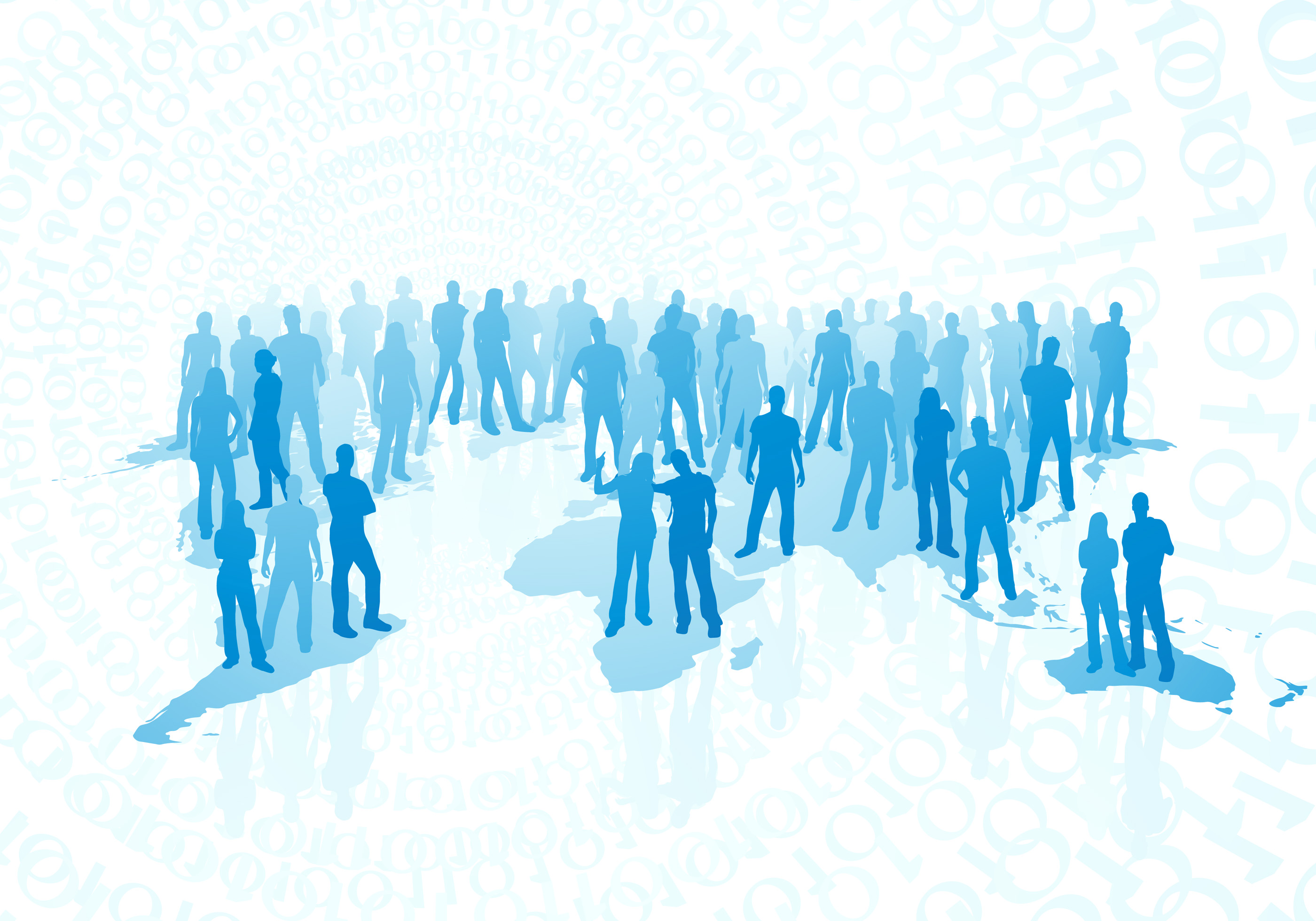
10. Generations Y and Z moving to the forefront: Preparing for the digital natives
Some 1.7 billion strong globally, Generation Y is rapidly coming of age and making its mark. Their digital attitudes and behaviours are permeating every facet of life and work, embracing the virtual, living in real time, thriving on social networking. This is the first generation of digital “cognoscenti” that will guide the global population through the chaos, complexity and intellectual overburden of early 21st century cyber-socialization. And don’t forget in ten years they will seem antiquated as today’s teens, Generation Z, usher in whole new ways of digitally-based thinking, working, playing and building relationships. These generations will strongly influence how we work and live in future, our attitudes and behaviours – but they are also vulnerable in a world of high youth unemployment and strained education resources. It will be critical not only to help them to develop, but to engage them actively in shaping the future. How are you doing it?
In Action!
The repatriate generation: Once it was the Western hemisphere that took advantage of highly skilled migrants from rapidly developing economies. Today the brain-drain is reversing. A Kauffman Foundation report has revealed that highly-skilled immigrant entrepreneurs from India and China are leaving the US by the tens of thousands each year, drawn away by better economic and professional opportunities in their home countries. It not only China and India: As Africa sees rapidly economic growth, well-educated Africans who have been living, studying and working in the West for years, are now spotting great opportunities back home. (Time). As these repatriates return, the West risks a growing brain-drain in the decade to come. Does your company do enough to retain these highly talented professionals?
The youth unemployment crisis: Worldwide the unemployment rate among youth aged 15-24 stood at 12.7% in 2010, which globally is about 2.6 times higher than the adult rates (Source: ILO). According to a report from labor economist Carl E. Van Horn and other authors at Rutgers University, the consequences of youth unemployment include increased poverty, increased reliance on social safety net programs, potential increases in illegal or off the books work, perhaps illegal actives like crime, idleness, lack of skills, atrophy of skills, inability to get a job later when the labor market gets better and this is only part of the list (Source: Huffington Post). As global youth unemployment is far higher than adult rates, and the crisis is expected to further discourage youth from trying to find a job, there is a need to actively assist young people into the workforce. What does your company do to help young people get relevant work?
Look Out For…
Educating/Training for the right jobs in future: Robots, smart machines and computers have been taking over repetitive tasks in mass production facilities for decades. Now they are moving into the realm of knowledge work as artificial intelligence and computers advance – smart machines can now be deployed for any task that can be reduced to repetitive steps, and ultimately the intelligence of these devices may exceed that of humans. Already some are questioning whether this move to automation will lead to a hollowing out of mid-level and even higher skilled jobs, and whether it is a reason behind continuing high unemployment. Nonetheless, Aaron Saenz on the Singularity Hub suggests that this coming revolution could also be an opportunity for humans to pursue enjoyable work. Technology is also a driver behind trends towards work becoming virtual and flexible (e.g. temporary, contract) which make it harder to get a fulltime job in a physical work place, leaving many people without the benefit of an employer. However these trends play out, one thing is clear: Job requirements will be different in future and there is likely to be a shift towards higher-skilled, flexible workers. The issue is that there is a growing skills gap, with many young people not being educated or trained in the skills required for future jobs. Even today, there are significant skills gaps in many economies, such as manufacturing in the US. This needs to be a critical area of focus for both governments and companies – today! (Sources: McKinsey Global Institute, The Economist)
Generation Z: They are realists and materialists. They are culturally liberal, if not politically progressive, they live with their parents longer than others ever did; and they are even more tech-savvy than Generation Y (Source: Booz & Co.). Generation Z (born after the mid-1990s) is growing up in a ‘playlist world’ where they can customize their life and take only the elements that matter to them. Their expectations will be no different when they begin their career. They won’t expect to be given the entire ‘album’ of work instructions. Their interests and approaches to life will help to drive massive changes in how people around the world socialize, work, and live their passions, as well as in the information and communication technologies they use to do so.
In December: Look out for trends in action on the fight for controlling the interface.



